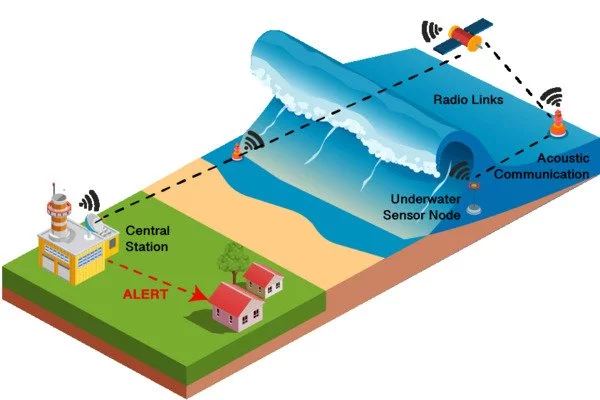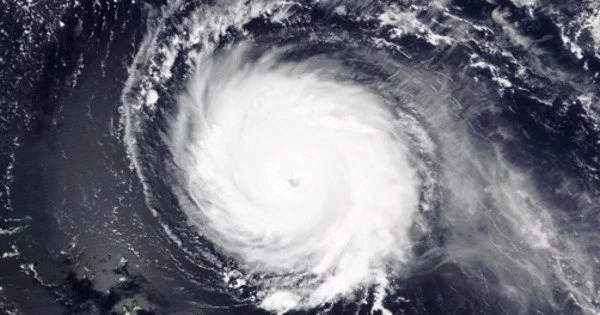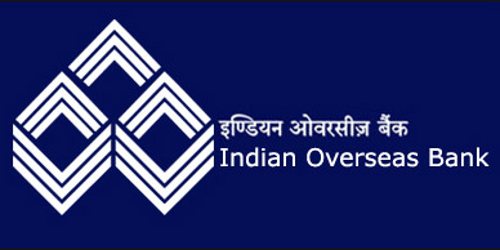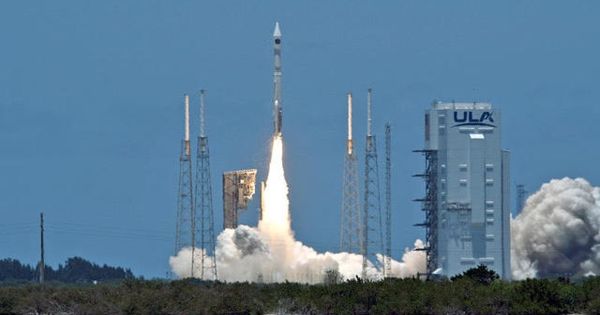Developing a tsunami early warning system using artificial intelligence (AI) can be a difficult task, but it is certainly doable and has the potential to greatly improve the effectiveness of existing warning systems.
Researchers create an early warning system that combines acoustic technology and artificial intelligence to instantly classify earthquakes and determine potential tsunami risk. They propose using hydrophones, which are underwater microphones, to measure the acoustic radiation produced by the earthquake, which contains information about the tectonic event and travels much faster than tsunami waves. The computational model triangulates the earthquake’s source, and AI algorithms classify the type and magnitude of the slip. It then computes critical properties such as effective length and width, uplift speed, and duration, all of which influence the size of the tsunami.
Tsunamis are extremely destructive waves that can destroy coastal infrastructure and result in fatalities. Early warnings for such natural disasters are difficult to provide because the risk of a tsunami is highly dependent on the characteristics of the underwater earthquake that causes it.
Researchers from the University of California, Los Angeles, and Cardiff University in the United Kingdom developed an early warning system that combines cutting-edge acoustic technology with artificial intelligence to instantly classify earthquakes and determine potential tsunami risk in Physics of Fluids, published by AIP Publishing.
Tectonic events with a strong vertical slip element are more likely to raise or lower the water column compared to horizontal slip elements. Knowing the slip type early in the assessment can thus reduce false alarms and improve the reliability of the warning systems via independent cross-validation.
Bernabe Gomez
Underwater earthquakes can trigger tsunamis if a large amount of water is displaced, so determining the type of earthquake is critical to assessing the tsunami risk.
“Tectonic events with a strong vertical slip element are more likely to raise or lower the water column compared to horizontal slip elements,” co-author Bernabe Gomez explained. “Knowing the slip type early in the assessment can thus reduce false alarms and improve the reliability of the warning systems via independent cross-validation.”
Time is of the essence in these situations, and relying on deep ocean wave buoys to measure water levels frequently results in insufficient evacuation time. Instead, the researchers propose measuring the earthquake’s acoustic radiation (sound), which carries information about the tectonic event and travels much faster than tsunami waves. Hydrophones, or underwater microphones, record acoustic waves and monitor tectonic activity in real time.

“Acoustic radiation travels much faster through the water column than tsunami waves. It carries information about the originating source, and its pressure field can be measured at great distances, even thousands of kilometers away. The derivation of analytical solutions for the pressure field is a critical factor in real-time analysis,” said co-author Usama Kadri.
The computational model triangulates the earthquake’s source using hydrophones, and AI algorithms classify the slip type and magnitude. It then computes critical properties such as effective length and width, uplift speed, and duration, all of which influence the size of the tsunami.
The authors tested their model with available hydrophone data and discovered that it described the earthquake parameters almost instantly and with low computational demand. They are improving the model by including more information to increase the accuracy of the tsunami characterization.
Their tsunami risk prediction work is part of a larger project to improve hazard warning systems. Tsunami classification is a component of software that can improve the safety of offshore platforms and ships.
















